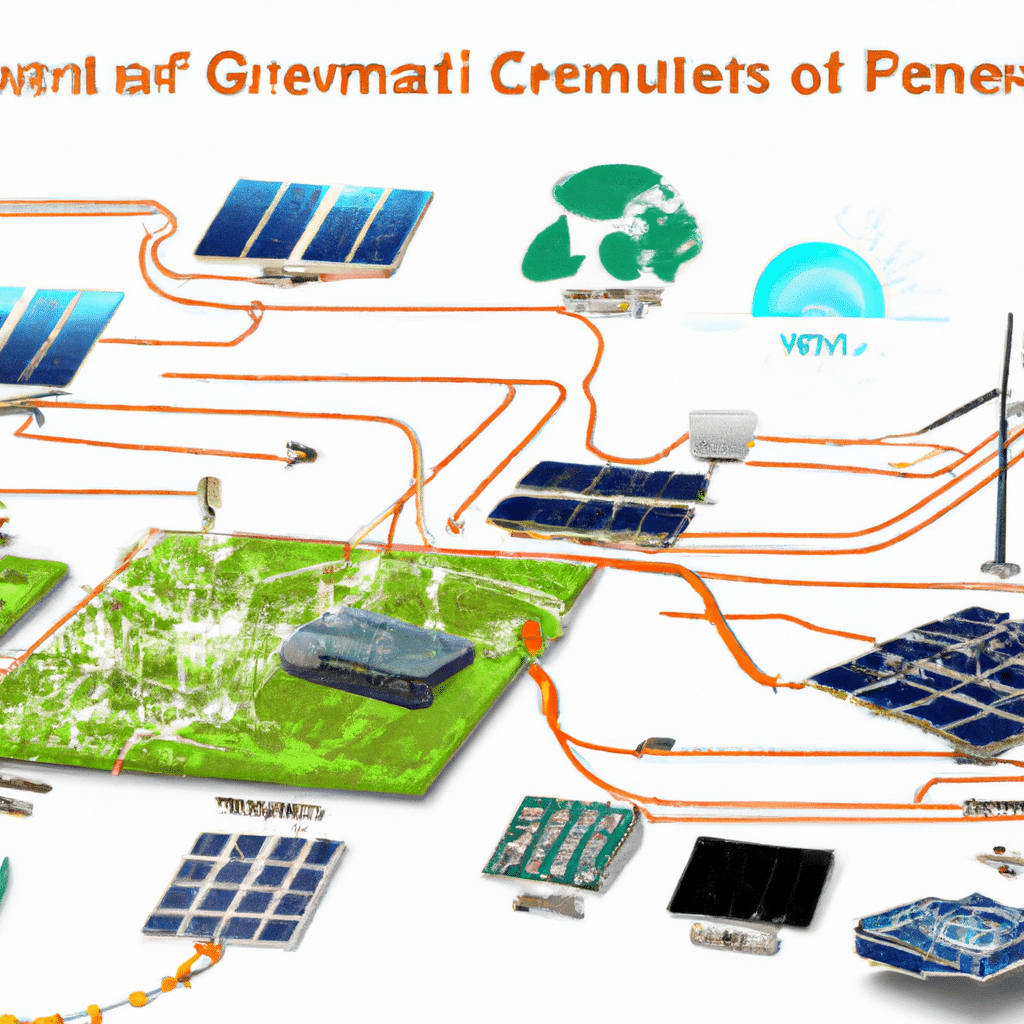IoT and the Future of Renewable Energy: Smart Grids
The Internet of Things (IoT) has revolutionized the way we live, work, and interact with technology. It has also had a significant impact on the energy industry, particularly in the development and deployment of smart grids. In this article, we will explore the ways in which IoT is transforming the future of renewable energy and how smart grids are playing a crucial role in achieving a more sustainable and efficient energy system.

The Role of IoT in Renewable Energy
IoT has enabled the development of new technologies that are transforming the way we generate and consume energy. For instance, IoT sensors can be used to monitor and optimize renewable energy generation, such as solar PV panels or wind turbines. These sensors can provide real-time data on energy production, enabling operators to adjust their systems to maximize efficiency and reduce costs.
IoT is also playing a critical role in the development of energy storage solutions. Energy storage is essential for renewable energy systems because they are intermittent, meaning that they generate energy only when the sun is shining or the wind is blowing. IoT sensors can monitor energy storage systems and provide real-time data on battery performance, enabling operators to optimize storage and prolong battery life.
Smart Grids and IoT
Smart grids are an essential component of the energy system of the future. These grids are designed to be more flexible, efficient, and resilient than traditional grids. They rely on IoT sensors and data analytics to manage energy production and consumption in real-time, ensuring that energy is delivered where and when it is needed most.
One of the key benefits of smart grids is their ability to integrate renewable energy sources into the grid. IoT sensors can monitor the energy production of solar PV panels and wind turbines, and adjust the flow of energy to the grid accordingly. This enables more renewable energy to be integrated into the grid, reducing reliance on fossil fuels and lowering greenhouse gas emissions.
Smart grids are also more resilient than traditional grids, thanks to their ability to detect and respond to outages in real-time. IoT sensors can detect power outages and automatically reroute energy to avoid blackouts. This ensures that energy is always available, even during extreme weather events or other emergencies.
The Future of Renewable Energy with IoT and Smart Grids
The future of renewable energy looks bright, thanks to the development of IoT and smart grid technologies. With the help of these technologies, we can create a more sustainable, efficient, and resilient energy system that benefits everyone.
One of the key challenges facing renewable energy is its intermittency. However, IoT sensors and smart grids can help to overcome this challenge by optimizing energy production and consumption in real-time. This will enable us to integrate more renewable energy into the grid, reducing reliance on fossil fuels and lowering greenhouse gas emissions.
Another advantage of IoT and smart grids is their ability to democratize energy production. With the help of these technologies, individuals and communities can generate their own renewable energy, such as solar PV or wind power. This will enable more people to become energy producers, reducing their reliance on centralized energy production and lowering costs.
Conclusion
In conclusion, IoT and smart grids are transforming the energy industry, particularly in the development and deployment of renewable energy sources. These technologies are enabling us to create a more sustainable, efficient, and resilient energy system that benefits everyone. With the help of IoT sensors and data analytics, we can optimize energy production and consumption in real-time, ensuring that energy is delivered where and when it is needed most. As we continue to develop these technologies, we can look forward to a future powered by renewable energy, where energy is clean, abundant, and accessible to all.












